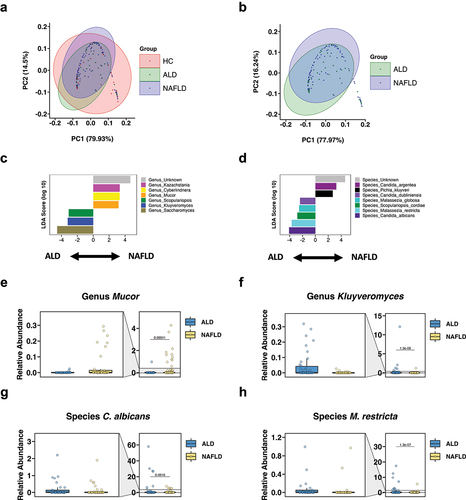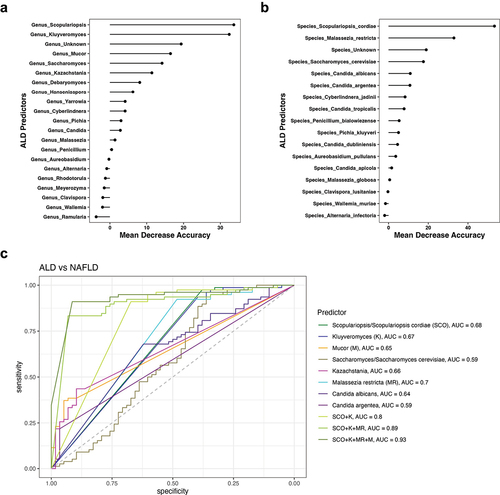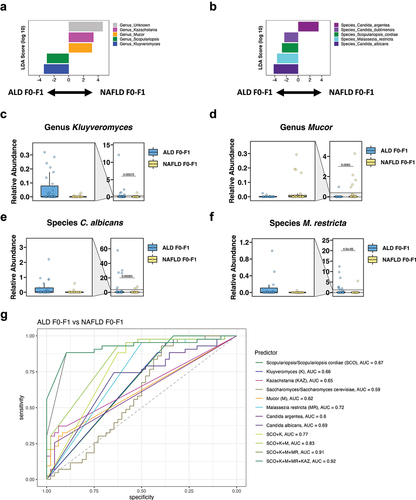Figures & data
*post-hoc p values.
Table 1. Baseline demographic and laboratory data of the study population.
Figure 1. The intestinal fungal microbiome differs significantly between patients with ALD and NAFLD.

Figure 2. A fungal signature differentiates ALD from NAFLD.

Table 2. ALD vs NAFLD predictors.
*post-hoc p values.
Table 3. Baseline demographic and laboratory data of the study population stratified by fibrosis severity.
Figure 3. Fungal subpopulations distinguish ALD and NAFLD with no or mild fibrosis.

Figure 4. A fungal signature differentiates ALD from NAFLD with significant fibrosis.

